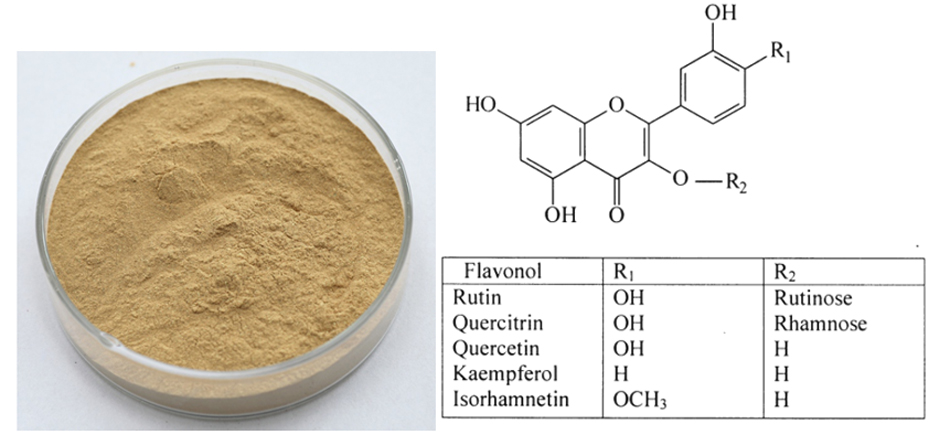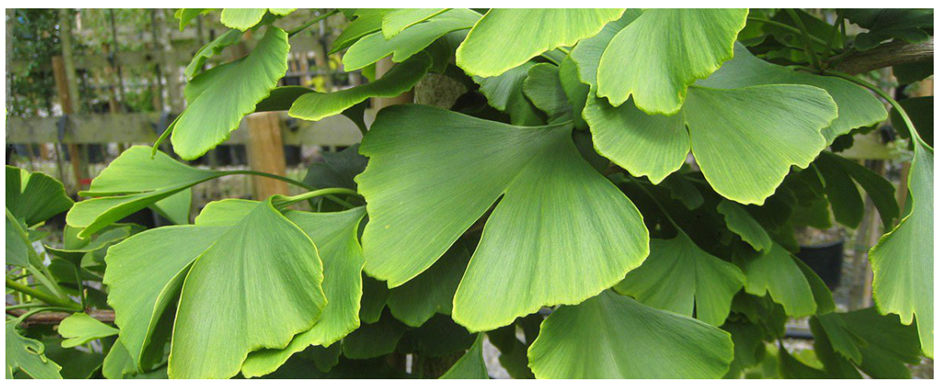High definition wholesale Ginkgo Biloba Extract Factory in Uganda
High definition wholesale Ginkgo Biloba Extract Factory in Uganda Detail:
[Latin Name] Cinnamomun camphcra
[Plant Source] It is extracted from Ginkgo Biloba Leaf.
[Specifications]
1, Ginkgo Biloba Extract 24/6
Total Ginkgo flavone glycosides 24%
Total terpene lactones 6%
2, Ginkgo Biloba Extract 24/6
Total Ginkgo flavone glycosides 24%
Total terpene lactones 6%
Ginkgolic acid 5ppm
3,CP2005
Total Ginkgo flavone glycosides 24%
Quercatin: kaemperol 0.8–1.5
Total terpene lactones 6%
Ginkgolic acid <5ppm
4.Germany Standard
Total Ginkgo Flavone Glycosides 22.0%-27%
Total Terpene Lactones 5.0%-7.0%
Bilobalides 2.6%-3.2%
Ginkgolic acid <1ppm
5.Water-Soluble Ginkgo Biloba Extract 24/6
Water Solubility: 5g Ginkgo Biloba Extract will be dissolved completely in 100g water
Total Ginkgo Flavone Glycosides 24.0%
Total Terpene Lactones 6.0%
Ginkgolic acid <5.0ppm
[Appearance] Light yellow fine powder
[Particle size] 80 Mesh
[Loss on drying] £ 5.0%
[Heavy Metal] £10PPM
[Extract solvents] Ethanol
[Storage] Store in cool & dry area, keep away from the direct light and heat.
[Package] Packed in paper-drums and two plastic-bags inside.
[Function]
Expanding blood vessel, resisting insufficient blood and oxygen deficit, increasing blood flow, improving cerebral arteries and distal
blood flow. Promoting cerebral circulation metabolism, improving memory function, resisting depression, resisting lipidic overoxidation,
protecting liver damage.
In clinic, curing high blood pressure, hyperlipoidemia, coronary heart disease, angina pectoris, arterial sclerosis, cerebral embolism,
senile dementia, primary and periodic dropsy, acute drumming in the ears, epicophosis, a variety of body function in disorder, dizziness
and so on.
Product detail pictures:

Related Product Guide:
We always believe that one's character decides products' quality, the details decides products' high-quality ,together with the REALISTIC,EFFICIENT AND INNOVATIVE crew spirit for High definition wholesale Ginkgo Biloba Extract Factory in Uganda , The product will supply to all over the world, such as: India, United Arab Emirates, South Korea, Our company considers that selling is not only to gain profit but also popularize the culture of our company to the world. So we are working hard to give you the wholehearted service and willing to give you the most competitive price in the market
Edwin Sarkissian – https://www.youtube.com/channel/UCIOGCEG14rj9GpIFhszkWoQ
FAN MAIL:
CRAZY RUSSIAN HACKER
P.O. Box 49
Waynesville, NC 28786
Subscribe to my 2nd channel https://www.youtube.com/user/origami768
follow me on:
instagram https://instagram.com/crazyrussianhacker/
facebook – https://www.facebook.com/CrazyRussianHacker
Camera gear I use to make video:
Canon PowerShot G7 X Mark II – https://amzn.to/2mzN0l6
Canon EOS 5D Mark III – https://amzn.to/2ljAggF
Canon EF 16-35mm f/2.8L II USM Ultra Wide Angle Zoom Lens – https://amzn.to/2moXabH
Canon EF 100mm f/2.8L IS USM Macro Lens – https://amzn.to/2ljxrfy
My older camera that I still use Canon EOS 60D – https://amzn.to/2m7ex06
Rode VMPR VideoMic Pro R – https://amzn.to/2moRT3P
Editing Software – https://amzn.to/2lRBiCs
DISCLAIMER: In this video description contains affiliate links, which means that if you click on one of the product links, I’ll receive a small commission. This help support my channel and allows me to continue to make videos. Thank you for the support!
Peanut, also known as groundnut (Arachis hypogaea) is a crop of global importance. It is widely grown in the tropics and subtropics, being important to both smallholder and large commercial producers. It is classified as both a grain legume,[2] and, because of its high oil content, an oil crop.[3] World annual production is about 46 million tonnes per year. Very unusually among crop plants, peanut pods develop under the ground.
Opened peanut
As a legume, peanut belongs to the botanical family Fabaceae (also known as Leguminosae, and commonly known as the bean or pea family).[1] Like most other legumes, peanuts harbor symbiotic nitrogen-fixing bacteria in root nodules.[4] This capacity to fix nitrogen means peanuts require less nitrogen-containing fertilizer and improve soil fertility, making them valuable in crop rotations.
Peanuts are similar in taste and nutritional profile to tree nuts such as walnuts and almonds, and are often served in similar ways in Western cuisines. The botanical definition of a “nut” is a fruit whose ovary wall becomes very hard at maturity. Using this criterion, the peanut is not a nut,[5] but rather a legume. However, for culinary purposes and in common English language usage, peanuts are usually referred to as nuts.
Peanut flour is made from crushed, fully or partly defatted peanuts. Peanut flour, depending on the quantity of fat removed, is highly protein-dense, providing up to 31.32g per cup (60g).[1] Culinary professionals use peanut flour as a thickener for soups, a flavor and aromatic enhancer in breads, pastries and main dishes.
Contents [hide]
1 Types
2 Nutritional value
3 References
4 Source
Types[edit]
Light roast Light roast 12% fat is lightest in roast, aroma and in flavor of all of the peanut flours offered. It is used in applications where the peanut flour is not needed for flavor. Light roast with 28% fat provides a light flavor and aroma to dishes. It is used in culinary dishes where only a subtle flavor is needed.
Dark roast The dark roast peanut flours provide a robust peanut taste and aroma. Both roasts are used when a strong peanut flour is wanted in the culinary dish. The dark roast 12% fat is less in flavor than the 28% fat.
Nutritional value[edit]
Peanut flour, defatted, is listed as being very nutritional and is very low in saturated fat and cholesterol. It is also a good source of dietary fiber, thiamin, folate, potassium and zinc, and a very good source of protein, niacin, magnesium, phosphorus, copper and manganese.[2]
Peanut oil[edit]
Peanut oil is often used in cooking, because it has a mild flavor and a relatively high smoke point. Due to its high monounsaturated content, it is considered healthier than saturated oils, and is resistant to rancidity. The several types of peanut oil include: aromatic roasted peanut oil, refined peanut oil, extra virgin or cold-pressed peanut oil, and peanut extract. In the United States, refined peanut oil is exempt from allergen labeling laws.[28]
Peanut flour[edit]
Peanut flour is lower in fat than peanut butter, and is popular with chefs because its high protein content makes it suitable as a flavor enhancer.[citation needed] Peanut flour is used as a gluten-free solution.
Boiled peanuts[edit]
Boiled peanuts are a popular snack in the southern United States, as well as in India, China and West Africa. In the US South, boiled peanuts are often prepared in briney water, and sold in streetside stands.
Peanuts are rich in essential nutrients (right table, USDA nutrient data). In a 100 g serving, peanuts provide 570 calories and are an excellent source (defined as more than 20% of the Daily Value, DV) of several B vitamins, vitamin E, several dietary minerals, such as manganese (95% DV), magnesium (52% DV) and phosphorus (48% DV), and dietary fiber (right table). They also contain about 25 g protein per 100 g serving, a higher proportion than in many tree nuts.[34]
Some studies show that regular consumption of peanuts is associated with a lower risk of mortality specifically from certain diseases.[35] However, the study designs do not allow cause and effect to be inferred. According to the US Food and Drug Administration, “Scientific evidence suggests but does not prove that eating 1.5 ounces per day of most nuts (such as peanuts) as part of a diet low in saturated fat and cholesterol may reduce the risk of heart disease.”[36]
The manufacturer gave us a big discount under the premise of ensuring the quality of products, thank you very much, we will select this company again.







